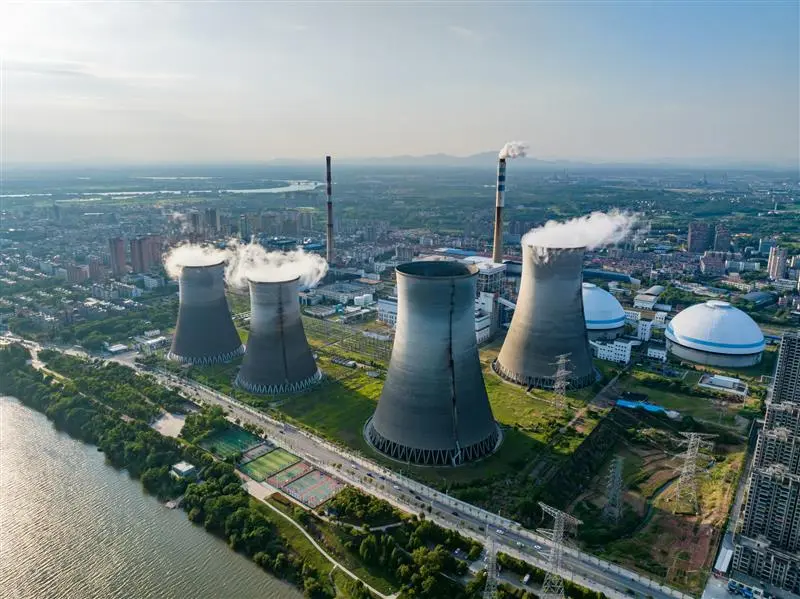The United States’ electrical infrastructure is aging. Over 70 percent of the grid is more than 25 years old, and it’s showing signs of deterioration. Between 2016 and 2022, power outages more than doubled compared to the previous six years, exacerbated by severe weather events like hurricanes and deep freezes.
As they work to modernize the grid, legislators and investors see an opportunity to replace legacy infrastructure with cleaner energy sources. The key question is: Can the US rebuild the grid around renewables while ensuring a reliable energy supply?
Jefferies sat down with Scott Beicke, Americas Co-Head of Power, Utilities, and Infrastructure, to discuss the integration of renewables in the US grid; the role of baseload generation, storage, and transmission; economic opportunities in new grid infrastructure; and more.
Energy Demand from Technology is Rising: How Do We Meet It?
The nation’s energy supply is not just under pressure from severe weather events and aging infrastructure. It’s also bearing the weight of rising demand, especially from the growth of artificial intelligence (AI) and related technologies. AI data centers alone are expected to add 323 terawatt hours of electricity demand in the US by 2030 – seven times more than what New York City currently uses.
“With the growth of AI and electrification, there’s an increased demand for energy capacity, and we haven’t seen much capacity growth from traditional generation sources,” Beicke shared. “A lot of it will come from regulated utilities, but we have to incent the private sector to deliver more capacity.”
Much of this new capacity is expected to come from renewable sources, Beicke said, highlighting solar and wind energy.
The U.S. Energy Information Administration projects solar power generation will increase by 75% from 163 billion kilowatt hours in 2023 to 286 billion kWh in 2025, and wind power will grow 11% in the same period.
“Capacity growth will have to come from gas generation, too.” Beicke emphasized. “A lot of people view gas as a bridge to the future, but a future without gas is very, very far off. To meet current and projected demand growth, traditional generation must play a role.”
Storage and Transmission: The Overlooked Keys to A Clean Grid
While investment has traditionally focused on large-scale renewable projects, funds are now starting to flow into crucial components like battery storage, the most invested-in energy technology of 2023. This technology is vital for managing demand surges by storing energy from renewable sources.
“Any growth in renewable energy capacity has to be augmented by storage solutions,” Beicke explained. “It can be hard to find storage opportunities with strong economics, but we’re seeing state subsidies and mandates support the industry’s growth.”
Another key area is transmission, or the delivery of energy from its place of generation to its place of use. Enhancing transmission infrastructure is essential for integrating new renewable capacity into the grid and reducing bottlenecks, which improves efficiency and can lead to consumer savings.
“People historically haven’t appreciated the role of transmission,” Beicke shared. “When you build a wind farm offshore, that comes with a significant transmission cost. We’re now starting to see dollars pour into renewable transmission, as the grid moves away from legacy thermal infrastructure.”
Investment Opportunities & Interest
Finally, Beicke turned to current investment and transaction trends in the energy sector. In 2023, global energy companies reached their highest valuations since 2016, with 1,135 deals generating $281 billion in global M&A value, an 8.2 percent increase over the previous year.
“There’s a huge amount of interest from private equity, especially in low-risk assets like transmission infrastructure. You also see continued interest in regulated utilities,” Beicke noted. “Funds also continue buying assets in the sector, so we’ve seen a lot of M&A activity.”
More broadly, Beicke expects investors to focus on reliability, as recent extreme weather events and geopolitical conflicts expose the vulnerabilities of global energy infrastructure. The importance of gas in maintaining a reliable, yet cleaner, grid is becoming more evident.
“Reliability is a huge issue for our clients. We’ve seen the challenges grid instability poses,” Beicke said. “We’ve seen the impact of weather-related reliability events in places like Texas. Cyber threats also keep people up at night; there are a lot of bad actors in the world who threaten our infrastructure.”
As the energy transition progresses, and the demand for new capacity grows, ensuring reliable US sources of power generation, transmission, and storage is critical for a successful energy future. For more insights from Scott Beicke and Jefferies, the leading advisor on M&A transactions in the energy sector for the last decade, follow along with Jefferies Insights.




